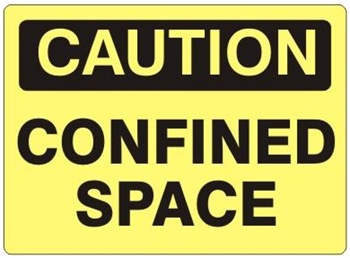
Safety Alert – Confined Space
CONFINED SPACE SAFETY ALERT
What is a confined space?
A confined space means an enclosed or partially enclosed space that is not designed or intended for human occupancy except for the purpose of performing work; has restricted means of access and egress; and may become hazardous to a person entering it because of its design, construction, location or atmosphere, the materials or substances in it, or any other conditions.
What are the risks?
Many confined spaces contain hazardous substances or dangerous conditions that could include:
- Poor Air Quality – Atmospheres with oxygen content less than 20% (deficient) or more than 22% (enriched) are not safe.
- Toxic Gases – Hydrogen sulphide, carbon dioxide, carbon monoxide, smoke, ammonia, chlorine, and argon are all potentially deadly.
- Flammable Atmospheres – A highly explosive atmosphere can be created when finely ground combustible materials such as grain, carbon, fibres, plastics or flammable liquids are present.
- Loose materials that may engulf or smother – shifting or collapse of bulk material, barrier failures.
What can we do to protect ourselves?
To effectively control the risks associated with working in a confined space, a Confined Space Risk Assessment and Control Program should be implemented at your host’s workplace.
The dangers and risks associated with confined spaces are not always obvious. All hazards must be identified and either eliminated prior to entry, or all precautions must be taken for the safety of the person entering the confined space. Items to consider prior to entering a confined space include, (but are not limited to):
- Do you know if a risk assessment has been conducted and know the practices and procedures?
- Do you know if a written work permit has been developed?
- Do you know if adequate atmospheric testing and monitoring is being conducted with an approved air quality monitor?
- Do you have all the proper personal protective equipment required?
- Do you know if a competent spotter will be present with an effective emergency response plan?
The attendant MUST ALWAYS have communication with the emergency response team and the person in the confined space.
Above all else, ensure that all workers involved in the confined space process are competent to do the job safely. Too many workers are injured and killed each year while working in confined spaces.
Unless you are trained in confined space hazards and how to control them, never enter a confined space.
If you have any safety concerns or issues, please use the contacts below:
[su_row][su_column size=”1/3″]
Alan Roydhouse
Senior Safety Adviser
M: 0418 854 039
E: [email protected]
[/su_column] [su_column size=”1/3″]
Ren Trinchera
Senior Safety Adviser
M: 0449 676 752
E: [email protected]
[/su_column] [su_column size=”1/3″]
Paul McPherson
Safety Adviser
M: 0415 121 606
E: [email protected]
[/su_column][/su_row]